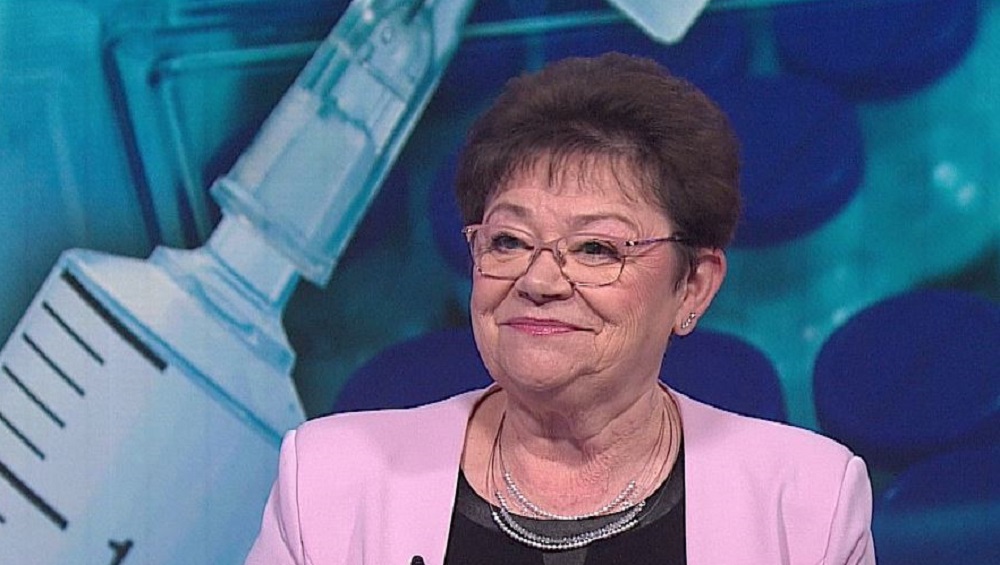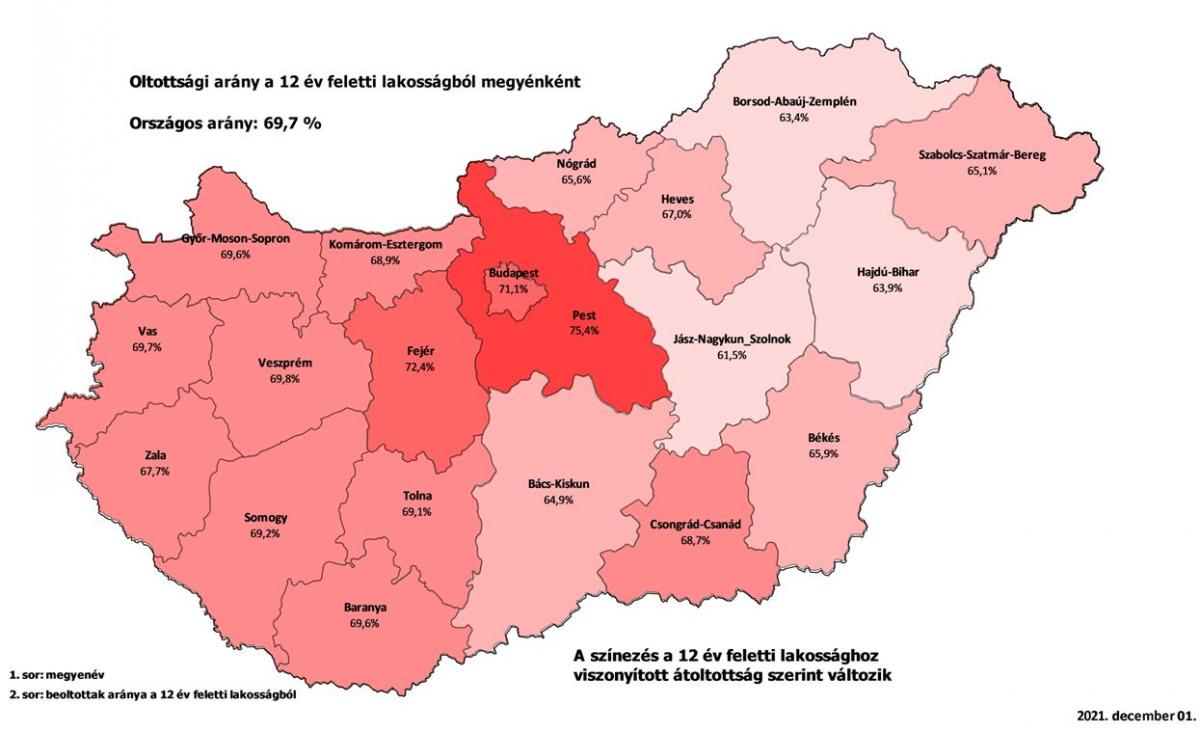The https://english.atlatszo.hu use cookies to track and profile customers such as action tags and pixel tracking on our website to assist our marketing. On our website we use technical, analytical, marketing and preference cookies. These are necessary for our site to work properly and to give us inforamation about how our site is used. See Cookies Policy
Nearly 200 institutions received covid vaccines in Hungary, with significant differences in distribution
We have been trying to obtain data on coronavirus vaccines in Hungary for a long time. In January, we submitted another FOI request to the National Centre for Public Health (NNK), headed by Cecilia Müller, asking for a list of vaccines delivered, by institution. After 90 days of waiting, we finally received the requested data, which showed that a total of 178 vaccine sites received vaccines, with the majority of sites receiving Chinese and Russian vaccines. However, there are significant differences in the distribution by county, as well as in the number of vaccines available in each facility. At the same time, Atlatszo calculated that nearly 5 million EUR worth of vaccines were thrown away due to storage, expiry or quality issues.
The coronavirus vaccination campaign started at the end of December 2020 in Hungary, with healthcare workers being the first to be inoculated. Initially, the only available vaccine was Pfizer, but later there were altogether six vaccines to choose from: Moderna, AstraZeneca, Sinopharm, Sputnik V and the single-dose Janssen. As of 5 May 2022, more than 6.4 million people had already received at least one dose of the vaccine, with 60% of those vaccinated having received a third vaccine and 290,000 having requested a fourth.

We have been curious for some time about how the vaccination campaign is progressing in each municipality, so last spring we submitted a FOI request to the National Public Health Centre (NNK), but we were unable to obtain the data we needed.
Later, it became clear that although it seems like there is no settlement-level data of vaccinees, vaccines delivered are kept in a register by health facilites. Six months after our first request, we finally managed to obtain data from the office of Cecília Müller, but there were several problems with it:
Detailed vaccination data provided by health authorities raises more questions than it answers
We first contacted the National Center for Public Health (NNK) in the end of March, exactly five months ago, with a FOI request to get more information on the vaccination campaign in Hungarian cities. After several unsuccessful data requests and a 90-day deadline extension, we finally managed to get data on the status of vaccine distribution.
In January, we again sent a FOI request for a list of coronavirus vaccines delivered to vaccination centres and health facilities, broken down by facility and vaccine type, specifically stating that we would like the table to include all vaccines administered by mid-January.
Vaccines are not only delivered through NNK
After 90 days, we finally received the requested data. However, the reply from Cecília Müller reveals that the list is not complete, as it only includes vaccines delivered by Hungaropharma Zrt. on behalf of the NNK.
They say that this includes hospitals and clinics, but not health care institutions such as general practitioners’ surgeries, to which vaccines were delivered via government offices.
Number of coronavirus vaccines delivered to healthcare institutions
If we compare the number of vaccines received in Hungary and already used, i.e. administered, with the number of vaccines sent by the NNK to health care institutions, according to the data of koronavirus.gov.hu and the European Centre for Disease Prevention and Control (ECDC), it is particularly striking that the list is not complete.
Number of vaccines received, delivered to healthcare institutions and administered by type
According to the table, 12.36 million doses of vaccines had been delivered to vaccination centres by the end of January, but nearly 15 million vaccines had been administered by that date, meaning that 17.48% of the administered vaccines, nearly 2.5 million doses, were probably through government offices.
The difference is particularly significant for four vaccines: according to a table sent by the NNK, 235,000 doses of AstraZeneca had been delivered to 112 hospitals by the end of January. However, this represents only 18.77% of the 1.25 million vaccines administered by that date, according to official figures. The same is true for Moderna, Sinopharm and Janssen.
Vaccines delivered to a total of 178 vaccination points
From the table obtained, it can be seen that a total of 178 health facilities received vaccines delivered on behalf of the NNK, of which only 8 vaccination points received all six types of vaccines, and even Pfizer vaccines for children between 5-11 years.
Pfizer was delivered to a total of 99 hospitals, which were typically hospitals in county seats and larger cities. In total, 24 vaccination centres in Budapest were included in the list. However, far fewer hospitals received the version suitable for vaccinating 5-11 year olds, only 26. The number of vaccination centres that received Sinopharm, AstraZeneca or Sputnik V was over 100. In contrast, Moderna was sent to the fewest number of facilities, with only 35 hospitals or clinics on the list, and just over 50 single-dose Janssen vaccine sites.
Number of vaccination points and vaccines received by type
Overall, the highest number of vaccination sites receiving vaccines was in Budapest, Pest, Borsod and Szabolcs-Szatmár-Bereg counties. Vas and Hajdú-Bihar counties had the lowest number of vaccine deliveries, with only 2-3 institutions in these counties receiving vaccines, according to the NNK.
No vaccination data reported for a long time
In addition to the vaccines delivered, it is also worth keeping an eye on how the vaccination coverage is developing in the counties. Most recently, county vaccination coverage data was published on the official coronavirus information site in mid-December.
The national vaccination coverage was 69.7%. The highest vaccination rates were in Pest (75.4%) and Fejér (72.4%) counties and in the capital (71.1%). The counties with the lowest vaccination rates were Jász-Nagykun Szolnok (61.5%), Borsod-Abaúj-Zemplén (63.4%) and Hajdú-Bihar (63.9%).
EUR 5 million worth of vaccines were thrown away
NNK also pointed out that “the quantity of vaccines shipped can never be the same as the quantity of vaccines administered, as vaccines shipped are sometimes discarded due to damage or because they could not be used within the expiry date.”
In another data request, we asked for data on the exact number of vaccines discarded. The data was provided in ampoules, so we calculated the dose numbers based on the instructions for use on the National Institute of Food and Drug Administration (OGYÉI) website.
Number of coronavirus vaccines that have become unusable or have been discarded
By the end of January, the Russian Sputnik V vaccine had been discarded the most – this may be partly because it is the only vaccine whose first and second doses have different formulations, so it so it makes a difference which is administered.
Last December, G7 noted that ECDC data showed that a tenth of the Russian vaccines received, almost 200,000 doses, had not been used, which, according to the paper, may have expired rather than used up, contrary to official communications. The government later admitted that the vaccines had indeed had to be discarded, due to expiry reasons, meaning that the number of Russian vaccines discarded is almost certainly higher than 200,000.
According to the NNK, Sinopharm had to throw away the least, which may be explained by the fact that although only 43% of the Chinese vaccines received so far have been used, this vaccine (together with Janssen) has the longest shelf life of two years, compared to half a year for Pfizer, AstraZeneca and Sputnik V. Moderna can be used for 7 months in unopened vials.
Based on the table, we also calculated the cost of unused, discarded vaccines. According to official data, the purchase prices were as follows: the cheapest is the UK-Swedish AstraZeneca, at €1.78 per dose. It is followed by single-dose Janssen at €8.14, then Pfizer at €15.5. Sputnik V was $19.9 (roughly €17.18) based on the contract disclosed by the government, while Moderna cost €19. By far the most expensive vaccine purchased was Sinopharm at €31.5 per dose. This was not the only problem with the Chinese vaccine, as we wrote about the circumstances of its purchase in Atlatszo.
According to our calculations, by the end of January, nearly 400,000 doses of vaccine had been thrown away, which is equivalent to a total of 4.9 million euros.
In reality, however, this figure may be slightly higher – if only because of the discrepancies in the Sputnik V vaccine, which are due to the fact that the NNK sent the figures per ampoule and did not clearly indicate how many doses were in each ampoule.
Translated by Zita Szopkó. The original, more detailed Hungarian version of this story was written by Zita Szopkó and Krisztián Szabó and can be found here.
Cover Photo: Cecília Müller, Chief Medical Officer, head of the National Centre for Public Health. Source: koronavirus.gov.hu
Hungary. What do you know about Hungary? from atlatszo.hu on Vimeo.


